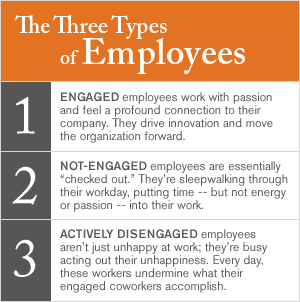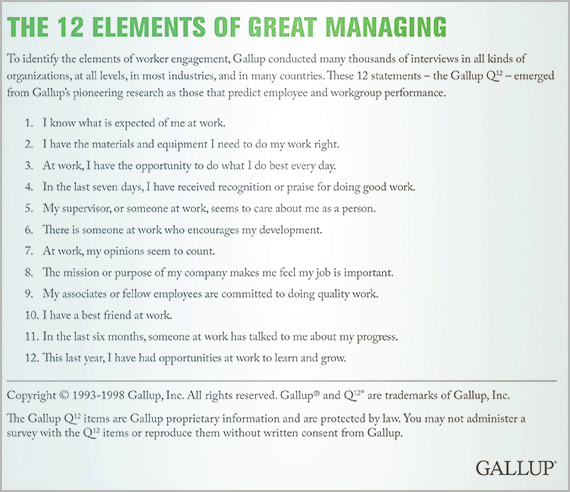China will become the global economic leader sometime in the next 10 to 25 years, according to many economists. This means China -- and not the United States -- will have the largest GDP in the world, which will, of course, be a global game changer. She who has the gold makes the geopolitical rules.
The cause of disengagement: Workers despise their immediate boss.
But China faces some serious challenges on its road to dominance. Some obvious ones:
-
enormous environmental problems that will require billions of dollars to fix
-
the one-child rule, which will create a scenario of far too few workers supporting far too many retirees
-
the growing likelihood of a disastrous banking bubble, where the balance sheets of businesses and banks are increasingly inflated and supporting one another
-
economic uncertainty, if China's GDP -- which has been increasing at about 8% -- begins to grow at a decreasing rate
-
fast-rising factory wages, which may cause China to lose its huge competitive advantage over other countries that may offer labor at a lower cost
-
growing political and social instability, manifested in increasing demonstrations and protests throughout the country
To this list of well-known woes and concerns, let me add one more, and it's perhaps the most serious of all: low workforce engagement.

I know that sounds soft. But human beings spend at least one-third of their lives at work. And because of this, I could argue that a person's quality of life is driven by his or her life at work. And the working citizens of China are doing horribly; 6% of the people who work for an organization report being engaged at their jobs. In addition, about 26% are flat-out miserable -- what Gallup researchers call actively disengaged. To put that into perspective, the U.S. workforce is about 30% engaged and about 20% actively disengaged.
China, we have a workplace problem.
Command-and-control management doesn't work anymore
If you were to ask me what the most dangerous state of mind in China is right now, I'd say that it's active disengagement in the workplace because it's so widespread. The cause of disengagement in China is the same as it is in every workplace around the world: The workers despise their immediate boss. And the reason they hate their boss is because the wrong person was hired to be the boss. It's that simple.
How does this happen? Well, I know just enough about the Chinese workplace to know that control is of enormous cultural importance. The type of people who are named "boss" in China command and control their "underlings," and those underlings do as they're told. People are not named manager for their ability to engage and develop employees.
But this command-and-control approach doesn't work in the new global workplace, where employees demand more autonomy and want more freedom of thought and action and to be more empowered and engaged. Old top-down management, the type that's entrenched in China, just doesn't work anymore. Plus, increasing globalization and access to media give more workers in China a look at what life is like in other places. Without a doubt, this creates a dangerous gap between the workers' world and what they see happening outside their country.
What employees really want is reflected in the 12 items that Gallup developed to measure employee engagement through decades of research studying companies and organizations around the world. This is a global standard, one that cuts across all cultures. China's national workforce will be transformed -- becoming highly productive and engaged -- when its organizations hire and develop managers who inspire employees to give high scores on these items.
These are the 12 most important, and most predictive, workplace elements Gallup has discovered. China's societal advancement -- or collapse -- lies within these elements, as employee engagement boosts productivity, quality, customer engagement, retention, safety, and profitability.

It would be wise for all Chinese executives and managers to consider how they can deliver on these simple yet transformational demands of the workplace. If Chinese leaders were to change their current spectacularly bad nationwide score of 6% engaged workers to 20% engaged workers, the country would be a completely different place -- one with a much brighter, more stable future.
China must stop choosing the wrong people to manage
My prediction: As China's nationwide employee engagement goes, so goes the country's rise to world leadership. But it's going to be awfully tough for the country to raise its percentage of engaged workers from 6% to 20% in the next 10 years if organizations keep choosing the wrong people to manage and lead. Though the lack of engagement of its workforce is China's biggest problem -- bigger, I'd argue, than pollution, the effects of the one-child policy, rising labor costs, etc. -- the good news is that it's actually the easiest to fix.
A version of this article originally appeared in China Daily.